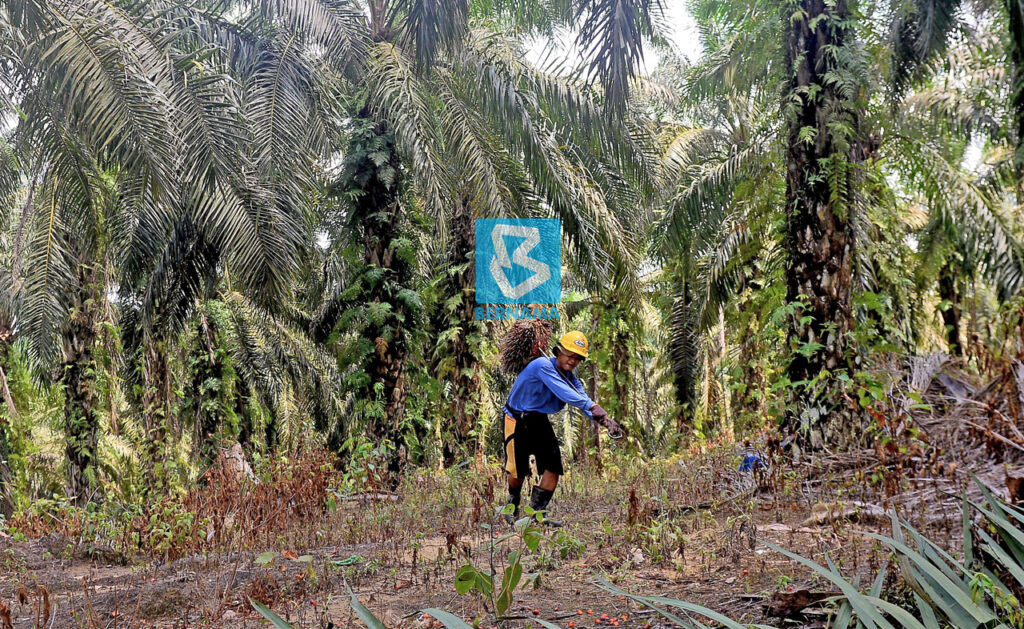The involvement of new machineries, under the Pemerkasa Stimulus Package, are expected to aid with the labour shortage issue in the palm oil sector, analysts observed. — Bernama photo
KUCHING: The enforcement of the latest movement control order (MCO) is unlikely to have much impact on palm oil production, analysts opine.
The research arm of MIDF Amanah Investment Bank Bhd (MIDF Research) recapped that in regards to the MCO 4.0 implementation in Malaysia from June 1, 2021 to June 14, 2021, the plantation sector will be allowed to operate at full capacity during the period.
“Hence, we opine that the enforcement of the latest MCO is unlikely to have much impact on palm oil production,” MIDF Research said.
“However, we remain cautious on the production level due to lower workforce and tight standard operating procedure (SOP) requirements. We do note that the lack of labour will lead to delays in the harvesting activities which will impact the quality of fruit bunches.
“Nonetheless, we think that the involvement of new machineries (under the Pemerkasa Stimulus Package) are expected to aid with the labour shortage issue.”
MIDF Research gathered that geographically, the higher output mainly fuelled from the higher contribution from the state of Negeri Sembilan (up 4.7 per cent year to date), Selangor (up four per cent YTD), Perak (up 3.9 per cent YTD) and Sarawak (up 0.2 per cent YTD).
Going ahead, the research arm expected production to recover beyond the second half of financial year 2021 (2HFY21) but below potential, given high reliance on foreign workers.
“In the longer term, we expect production to increase significantly as smallholders would be more aggressive in applying fertiliser during periods of high CPO prices and current better economic conditions.”
To note, MCO 4.0 has been extended another two weeks from June 15 to June 28, 2021.
As for the palm oil supply tightness situation, MIDF Research believed that it will likely remain at least until third quarter of FY21 (3QFY21), given the slow growth of output due to labour shortage issue in our country as well as other MCO restrictions.
“On the demand front, the export momentum has started to show signs of fatigue from India post-Eid festive period and Covid-19 surge in the country.”
Nonetheless, MIDF Research expected China’s export demand growth to continue as recently China has approved new standards for premium palm oil.
On top of that, the research arm was cognisant that export demand will recover on the back of recovery of economic activities globally and higher export demand from Saudi Arabia as Malaysia has clinched a palm oil deal.
“As such, we foresee inventory level possibly remaining tight in the coming months as the industry experiences slow production growth.
“This should lend support to crude palm oil (CPO) price. In the CPO futures market, prices have rallied to its highest in over 10 years to above RM4,000 per tonne, amid strong market sentiment and the rally in the soybean oil market.”
All factors considered MIDF Research maintained its ‘positive’ stance on the plantation sector with 2021 CPO average price forecast of RM3,000 per metric tonne (mt).
Meanwhile, the research arm of Kenanga Investment Bank Bhd (Kenanga Research) stayed ‘neutral’ on the plantation sector with an unchanged CY21 CPO price forecast of RM3,000 per MT.
“Expectations of rising inventory levels have begun to weigh on CPO price. This will be more evident should June’s inventory levels rise as anticipated,” Kenanga Research said.
“However, any shock to supply from stricter movement controls will turn the tide.”
To note, Kenanga Research expected total supply of 1.68 million MT to outstrip total demand of 1.58 million MT, leading to higher ending stocks of 1.67 million MT in June.
“The key factors to continue focusing on in the coming months are stockpiling activities by India and China, labour situation as we approach peak production season, movement restriction developments, supply-demand dynamics of soybean market, and biodiesel mandates fulfilment.”

